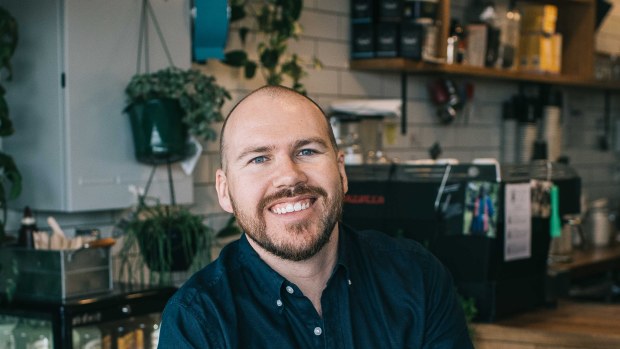[ad_1]
Either way, the vast majority will need advice. Parents can be energized by the memory of their own financial mistakes when they were young.
How things have changed
The incentive for parents to invest time, effort, and perhaps a little money in helping their adult children successfully save and invest is that it can reduce future demands on the “mom and dad bank.” Which collectively has become an alarming provider of housing finance resources for first-time homebuyers. That leaves more for mom and dad, and the long pensions stretching out before them if they exceed their actuarial lifespan.
The problem for parents of young adults today – especially baby boomers – is that investing has changed a lot since they were young adults.
Back then, say the 1990s, a term deposit with a bank or building society (a common savings institution now an endangered species) generated a generous real return. That is to say, a return higher than inflation which would translate into appreciable capital growth over a few years.
Interest income was taxable, as it is today. In practice, the Australian Taxation Office was only just beginning to apply the now widespread practice of cross-referencing data from banks and savings institutions with tax returns.
These features made term deposits a safe and attractive savings vehicle for short to medium term purposes – cars, vacations, exotic audio systems, even a deposit on a home if the expected purchase date was in less than five years.
For those with longer horizons, unlisted mutual funds and listed investment companies and mutual funds have offered exposures to capital growth – with the protection of diversification – in pools of investment. ‘local and international assets. For the adventurous and sophisticated long-term investor, there was direct investment in ASX listed companies. And it was about as sophisticated as most people. Almost no one has invested directly in foreign stocks.
These days, term deposits can still be safe. If you have deposits with a regulated savings institution, you won’t lose 10% or 20% of your capital just because the stock market plunges.
But term deposits are far from attractive. Yields in the age of ultra-low interest rates – “financial repression†– are lower than inflation. This means that you are paying the savings institution for the privilege of holding your money – or to put it bluntly, losing money. On top of that, the ATO wants to assess your incredibly low sub-inflationary performance and has electronic receipts.
Poor returns encourage a relentless search for improvement. These always come with greater risk. The good news is that these risks can be managed more easily as a new generation of investment products has emerged, along with apps to access and manage a budding investor’s portfolio.
Of course, the cardinal principles of investing still apply – don’t put all your eggs in one basket and if it’s too good to be true, it is.
Keep it simple
If you’re looking for simple solutions to this conundrum, Tim Mackay, an independent financial advisor at Quantum Financial, has some.
Tim MacKay is a former sell-side analyst who made a 180 degree turn and became a big fan of passive investing.
First, he says, there is no point in trying to interest your offspring in their twenties in the “why and how†of investing if they have other priorities – which, let’s face it, many have.
Second, Mackay is a former sell-side analyst, i.e. a research analyst who practiced for an institutional brokerage firm, trying to persuade fund managers and pension funds to buy, or sometimes to sell, shares of such or such company.
As a financial advisor, Mackay has made a 180 degree turn towards passive investing and is a “big fan” of exchange traded funds (ETFs). These are funds whose units or shares are traded on the ASX. They can offer exposure to large and diversified pools of stocks, real estate, fixed interests or a mixture of these asset classes.
Mackay says that an easy way to diversify is to buy a high growth “pre-blended” ETF (if you’re investing for five to seven years or more) or a more conservative asset allocation for those with high growth. shorter period. Investors who choose to reinvest distributions (a good way to increase the investment) should be aware, Mackay says, that tax will have to be paid on them. And for those who do not reinvest, it will still have to decide what to do with the distribution.
These are “set and forget†investments that simplify the process, Mackay says. ETFs are offered by leading global and local fund managers such as Vanguard and BetaShares (these are not recommendations or advice; readers are encouraged to do their own research).
A young adult can start with a lump sum and – ideally – make regular investments to build up the investment. Parents can offer incentives, for example by making small and regular contributions to the fund to match the deposits of their children, or part of them.
The hope is that they’ll stick with it for a number of years, discover the power of compound returns, and become more interested in investments as they age.
There are a number of phone apps that can provide easy access to ETFs and trading, including trading of individual stocks (although that is not necessarily the focus of this exercise). Examples (not recommendations) include CommSec Pocket, Raiz, and Superhero. Their format is aimed at young adults and they offer access to thematic ETFs – for example, technology, games or cybersecurity – that interest them, as well as typical menus of foreign and local stocks, real estate, fixed income securities, etc.
Of course, there is a certain risk of losing capital if the stock market, a particular sector or an asset class undergoes disruption. But well-structured ETFs can reduce the downsides, and the more diversification the better.
Mackay recognizes this risk, but also points out that earning interest below inflation causes you to lose some capital year after year.
“By leaving it in the bank, you almost guarantee that you are going back after inflation, right?” It’s obvious – you have to do something, â€he says.
This is the simple approach, perhaps best suited to young people with little interest in investing.
Go further
Glen James, host of the My Millennial Money podcast and author of Sort Your Money Out, has a tougher prescription for your offspring – essentially a self-discipline and delayed gratification boot camp.

Glen James, host of the My Millennial Money podcast and author of Sort Your Money Out. .
It doesn’t matter if you’re 21, 35, 65 or 100, James insists, everyone has expenses, so everyone needs a spending plan, a savings and investment plan, and separate accounts for each.
“We have to have a monetary system in place. We need to look at the spending. We need to develop good habits while we’re young, â€says James.
In addition, lump sums are often allocated. So for two, three or four years, how much do you not need? For example, out of a modest sum of, say, $ 15,000, a young adult may need to set aside $ 4,000 to help buy a car and $ 1,000 for an emergency fund for children. repairs. He or she may also consider leaving home or going on vacation abroad within the next two years, which will require a minimum of $ 2,000 to $ 3,000.
The amount available to invest is therefore even more modest, perhaps $ 7,000 or $ 8,000.
Then how long can you invest it? James believes that five or six years is the minimum for investing in stocks. If you don’t plan to buy a home for another two or three years, says James, even a severe stock market correction should only delay your plans for about six months, given the propensity of the stock markets to recover sharply in a short period of time. once they’ve hit their bottom.
Before young adults invest any money, however, they need to invest time and effort to understand how the market works, so “we’re not just putting $ 6,000 in ANZ or Woolworths stocks,” James says. . “We need a diversified portfolio of investments.
James also says there should be a limit to parental guidance. Parents need to be prepared to “throw in the kitchen sink†to educate their adult children about investing. He offers his clients online courses, in small pieces, to help them.
But “at the end of the day, I don’t think they should invest $ 6,000 or $ 7,000 because mom and dad want it,†he says. “If they’re not interested in investing, just put it in an online bank account and add to it. “
[ad_2]

